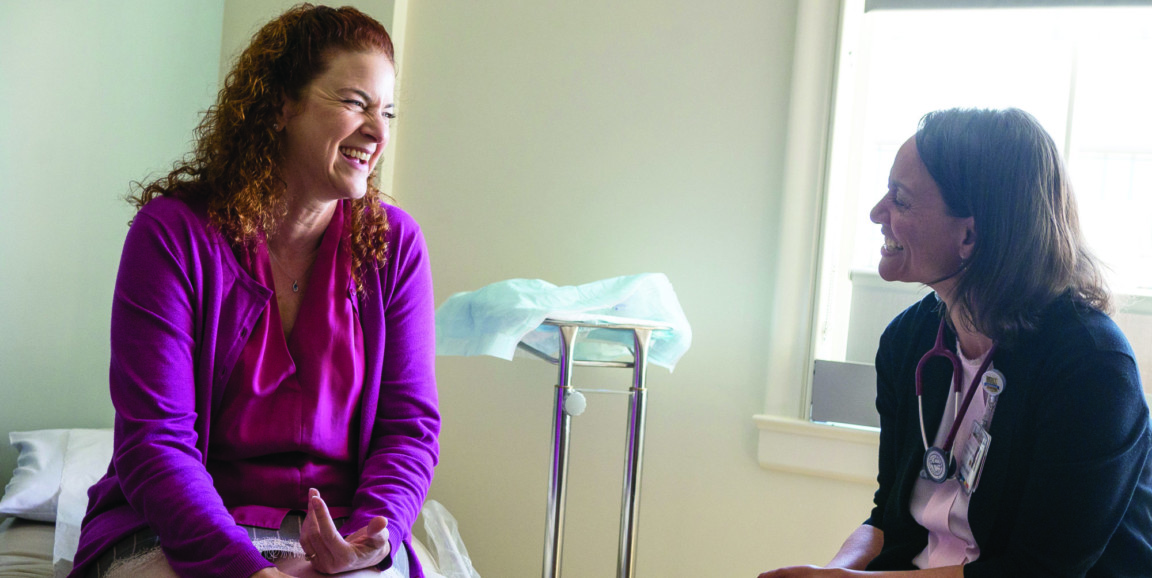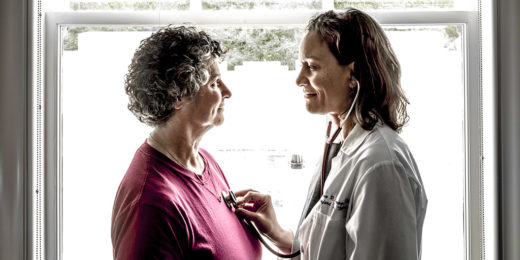"Life-changing" is not a phrase you typically hear in everyday conversation. But that's how Debbie Spaizman describes her experience as a participant in a Stanford Medicine pilot project called Humanwide.
The idea behind Humanwide is simple: clinicians partner with patients to pull together their individual data, from lifestyle to DNA, and create a comprehensive picture of their health. The care team then helps the patient manage current health conditions and address future risks through a plan aligned with his or her personal goals.
Megan Mahoney, MD, Stanford Medicine's chief of general primary care, led the design and year-long implementation of the Humanwide pilot at the Primary Care 2.0 clinic in Santa Clara. In a paper in the Annals of Family Medicine, she and co-author Steven Asch, MD, outlined the early lessons of the year-long project, which involved 50 patients.
Dean Lloyd Minor, MD, lauded the promise of the Humanwide model in our news release, saying:
Our vision of Precision Health is to predict, prevent, and cure - precisely... With Humanwide, we have begun to realize that vision in a clinical setting. The information gathered in this pilot suggests approaches to primary care that may ultimately benefit thousands of people.
In keeping with the vision of bringing Precision Health to life, Stanford Medicine leaders invited a videographer and broadcast reporter to document the Humanwide journey through the eyes of Spaizman and four other patients. This clip offers a preview of their compelling stories, which are told through six video episodes, a 30-minute film and six podcast reports:
Spaizman and the other participants underwent genetic assessments that gauged their risk for cancer and other diseases, and a pharmacogenomic evaluation that determined which types of drugs are most effective for their individual biology and cause the fewest side effects. The patients also tracked key health metrics, such as blood glucose levels and blood pressure, using portable digital devices that beamed their readings back to their electronic health records for remote monitoring by care teams.
The teams, which included a primary care physician, nutritionist, behavioral health specialist and clinical pharmacist, used this data to inform each patient's care. They also considered other factors, such as social and environmental determinants. They succeeded in identifying several previously overlooked health conditions and risks for different participants, from hypertension to heightened risk for breast cancer.
For Spaizman, the biggest discovery involved her reaction to certain types of narcotic pain relievers. The pharmacogenomic evaluation helped her doctors prescribe the right drug for her after a planned surgery, so that her pain was alleviated and she didn't suffer unpleasant side effects.
It was one example of the Humanwide model zeroing in on what mattered most to patients, Mahoney said. As she noted in the release:
With Humanwide, we're able to focus on the whole human: who they are when they're working, who they are when they're playing, who they are when they're at home.
Photo by Luceo






